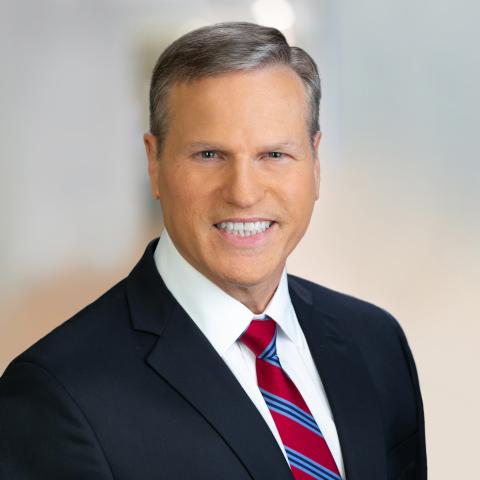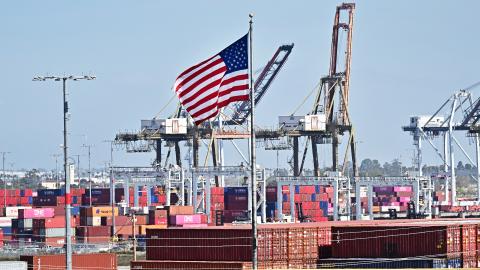__This essay is part of a series exploring the importance of allowing flexible business models in the American economy.__
Business powers America. It is easy to see the contribution of trillion-dollar corporations to the U.S. economy, but the United States is built on mom-and-pop operations, and businesses of all shapes and sizes in between.
To succeed in American business is to succeed in the largest and arguably most competitive market in the world. The success of American businesses does not come from some cookie-cutter mold. Nevertheless, myths remain about how to achieve success:
# Successful American businesses all fit into well-known business models, and businesses outside those structures are too frail to succeed.
# American business leaders must be born into wealth or have access to government funding to overcome the inherent risks of starting a new business.
# Large amounts of money, from initial funding to revenue and sales, are required for success.
Thankfully, U.S. business leaders have proved and continue to prove that these assertions are false. In so doing, they illustrate both the dangers of certain types of government intervention in markets and the government’s proper role in markets.
__Myth #1: Successful American businesses all fit into certain well-known business models, and businesses outside those structures are too frail to succeed.__
No single, permanent structure characterizes a successful market. Indeed, the structure of today’s economic markets was unimaginable a generation ago, much less centuries ago.
Today, technological change is the primary driver of economic growth. And as technology has changed, markets have shifted to accommodate new products and services and new consumer demands.
Successful business leaders do not assume that market structures are immutable. Rather, they change them as needed. Consider Benjamin Franklin. In colonial Philadelphia, he bemoaned the absence of a public library, but he did not accept this absence as inevitable. Instead, Franklin went door-to-door seeking subscribers for a new public library. Finding that a market for a library was missing while demand was present, he ultimately built one.
After the Civil War, Aaron Montgomery Ward discovered that countless Americans were stretched out over millions of square miles across the American continent. He could have reached them as a wholesaler selling to local stores in towns and cities across the country. Or he could use a new technique—a sales catalog— to reach Americans directly, bypassing local stores. He chose the latter and created the Montgomery Ward catalog business.
Efficient distribution is not the same for every product in every market, though. When Alfred P. Sloan became head of General Motors in 1918, GM was a relatively weak company, but over the next decade, Sloan focused on the development of automotive dealerships across America. In so doing, he catapulted GM from its humble beginnings into the largest automobile company in the country.1
In the 1990s, Jeff Bezos created a small online bookstore called Amazon. Over time, Bezos incorporated the efficiencies he developed in distributing books into the distribution of myriad new products and services. Thus was born one of the largest and most expansive corporations in the history of the world, and the behemoth people know today.
If successful businesses all fit into certain known business models, these entrepreneurs could not have succeeded. And if the government had created rules to block new business models, these entrepreneurs would have failed, and America would be poorer for it. Franklin, Ward, Sloan, and Bezos shared a common belief—a belief that they had a better method of distributing goods. No government law or rule stopped them from trying. But while each of them was successful in developing new distribution techniques, there were countless others who tried and failed. The success of American business, then, is not that our entrepreneurs are particularly clever, but that our government allows competing business efforts—rather than government fiat—to determine winners and losers in the marketplace. Unnecessary rules that limit or prohibit businesses’ access to markets harm the American consumer and reduce economic growth.
__Myth #2: American business leaders must be born into wealth or have access to government funding to overcome the inherent risks of starting a business.__
Successful business leaders come from many different socioeconomic backgrounds, often quite modest. Though some are well credentialed and attended top business schools, others have had little formal education or training. Some of America’s greatest industrial titans—Andrew Carnegie, Julius Rosenwald, John D. Rockefeller, Henry Ford, Cornelius Vanderbilt, and Jay Gould, to name a few—had at most a high school degree.
Other successful business leaders, such as Thomas L. Jennings and Frederick Douglass, overcame the extraordinary adversity of being born into slavery. Still other African-Americans, such as Madam C. J. Walker, Elijah McCoy, and Garrett Morgan, became great business leaders with little to no formal education.
All of them, and countless others, attained business success without the benefit of government subsidies or preferential treatment. In many instances, they succeeded by overcoming numerous government obstacles. In the United States, business success is neither a birthright for the wealthy nor a government-created benefit. It is instead the result of hard work and skill. Equipped with these tools, people from even the humblest of backgrounds can, and have, overcome enormous obstacles on their paths to success.
Of course, for every successful business, countless others languish, and indeed many fail. But the difference between success and failure in American business is not the circumstances of one’s birth or access to government hand-holding.
__Myth #3: Large amounts of money, from initial funding to revenue and sales, are required for success.__
Although for some successful businesses revenues are measured in trillions of dollars, for others they are measured in simple dollars and cents.
According to the Small Business Administration, there are more than thirty million small businesses in the United States,2 or nearly one small business for every ten Americans. According to the Census Bureau,3 that is nearly one small business for every four households in the country. Put another way, there is nearly one small business for every household headed by an individual between the ages of twenty-five and seventy.
Nearly sixty million Americans work for small businesses,4 and although these businesses do not earn trillions of dollars, they are successful every day.
More than six million Americans engage in direct sales,5 usually as part-time small businesses, outside of retail outlets. They sell goods and services to friends, families, neighbors, and themselves and are attentive to their customers’ needs. Their average sales are in the thousands of dollars, to the benefit of both buyers and sellers.
To see the importance of small dollars in American business, consider one classic example. Girl Scout cookies are an American tradition, with one million girls selling them every year. While each girl may sell only a few boxes for a few dollars each, annual collective sales of Girl Scout cookies reach hundreds of millions of dollars.6
Even outside the small business context, every American can raise and donate funds for specific causes thanks to new crowdfunding platforms. Crowdfunding is a profoundly American phenomenon, in which large numbers of individuals donate small amounts of money—sometimes, even just pennies—to support a specific cause. Kickstarter, GoFundMe, Indiegogo, Patreon, and even the honeymoon crowdfunding platform Honeyfund are just a few examples. Ultimately, these platforms are a modern-day realization of an old English proverb: “Take care of the pennies and the pounds will take care of themselves.” American crowdfunding turns that proverb into a daily reality.
The United States has the most diverse, complex, and successful business environment in the world. If there was a single formula for business success, it would have been patented. If there was a single background for success, it would have been mimicked. If there was a single set of financial resources for success, it would have been discovered.
Rather, America’s enduring strength is that individuals from any background and with any set of resources can dream of owning a successful business. Success is never guaranteed— it takes skill, knowledge, hard work, persistence, and even an occasional dose of good luck. Some businesses succeed; others fail. But they all start with a dream. And in the United States, that dream lives in the heart of every business, large or small. The proper role of government is not to look at some U.S. businesses as frail and others as strong, propping up one at the expense of the other and allowing some to compete while excluding others. Instead, the proper role of the government is to allow competitors to compete and consumers to decide.




















